The Mellotron - MADE IN BIRMINGHAM
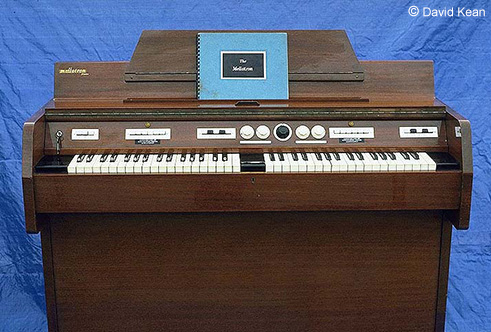
Although the name "Mellotron" may not be familiar to most people, anyone who is a fan of the great progressive rock sounds of the 1960s and 70s will know the wonderful tones produced by this influential keyboard instrument. Check out 'Nights In White Satin' (Moody Blues), 'Space Oddity' (David Bowie), 'Watcher Of The Skies' (Genesis), 'Kashmir' (Led Zeppelin), just to name a few.
The basic concept behind the Mellotron was developed in the U.S.A. by musician/inventor Harry Chamberlin during the early 1950s. He designed and built a keyboard that used a system of pre-recorded tapes composed of recordings made by real instruments used in an orchestra.
The desired instrument (e.g. violins) was selected by a switch and then "played" by pressing one or more of the keys that played-back the pre-recorded sound at the same pitch as the musical note of the key that was being depressed. This allowed the operator to literally "play" their own orchestra although the resulting combination of sounds produced were very distinctive and unique in their own way.
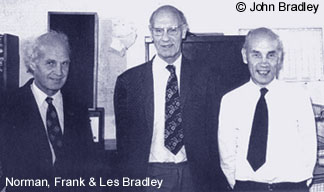
This new instrument was named "The Chamberlin" but few were produced owing to its complexity which made it prone to mechanical or electrical failure. In an effort to improve the design, Bill Fransen who represented the Chamberlin company travelled to the U.K. during 1962 in search of a manufacturer who could make some essential components. He eventually ended up in Birmingham at the factory of Frank, Norman, and Les Bradley of Bradmatic Ltd. The brothers saw the potential of the machine and were able to substantially improve on the original design.
With the co-operation of Bill Fransen, the Bradley brothers set up a factory at 338 Aldridge Road, Sutton Coldfield called "Streetly Electronics". It was there where they produced a machine that was named "The Mellotron". It had two keyboards mounted side-by-side and used a pre-recorded tape system similar to that of the original Chamberlin.
Some time later when Harry Chamberlin discovered his idea was being infringed upon, he was furious and took legal action against the Bradley's - they had assumed the invention belonged to Bill Fransen! Fortunately, an agreement was later reached concerning payment and licensing of the patent so the Bradleys were able to resume production. Popular UK magician and TV personality David Nixon was one of the famous stars of the day who promoted the new instrument.
"This was my 'First man on the moon' event"
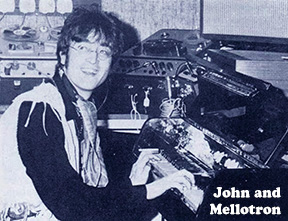
Although the Mellotron was originally marketed for home entertainment, it was during the mid 1960s when some of the more adventurous pop groups and musicians were keen to try out new sounds on their records and a few experimented with the Mellotron. John Lennon just had to have one and used it to great effect on the Beatles ground-breaking recording of 'Strawberry Fields Forever'. Other musicians soon followed this trend including Mike Pinder who was a founding member of Birmingham's own Moody Blues.
Mike had known about the Mellotron for some time as he worked at the Streetly factory before the Moody Blues were formed. He recalled; "The Bradley's were wonderful people to work for. A warm friendly atmosphere prevailed throughout the small factory. I will never forget seeing and playing the Mark II for the first time. This was my 'first man on the moon' event!"
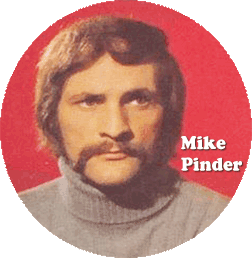
He eventually bought his own second-hand Mellotron Mk II at a bargain price from the Fort Dunlop Tyres Factory recreation centre in Birmingham where it had seen little use. Mike said; "I finally got a Mark II Mellotron that Les Bradley located for me. It was at the Dunlop Tyre factory's recreation centre where no one knew how to use it. Finally, I was able to experiment freely."
"The first modification I made was to replace the rhythm and sound effects tapes with a second set of lead tapes. This gave me 36 choices to mix sounds. Secondly, I removed the heavy built-in speakers and used a line-out feed to a stage amp/speaker system. A third modification eventually involved replacing the valve/tube pre-amplifier with a transistor system and I was able to get hold of some of the first printed circuit DC motors to replace the trouble-making AC ones. This solved the problem of the Tron going out of tune when there was a drain on the local electricity supply."
The year was 1967 and Mike played the instrument on the new Moody Blues album "Days Of Future Passed" which included the classic recording 'Nights In White Satin'. This influential album became a best-seller and set the band up for international success as well as establishing the Mellotron as an integral part of the group's sound. The modifications Mike Pinder made to his own Mellotron were also later incorporated into production models at the Streetly factory.
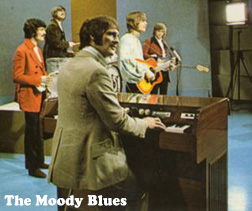
Other West Midlands bands to use the Mellotron on their records was Traffic whose 1967 hit single 'Hole In My Shoe' prominently featured Dave Mason's inventive use of the instrument. The Move were another Birmingham band who had success with the Mellotron when it was heard on their Number One hit single 'Blackberry Way' in 1968.
Another early Mellotron enthusiast was future Electric Light Orchestra star Jeff Lynne who played one on the first Idle Race album. The Fortunes also had the Mellotron on some of their records and even the pioneers of heavy metal Black Sabbath were to use it on a few albums.
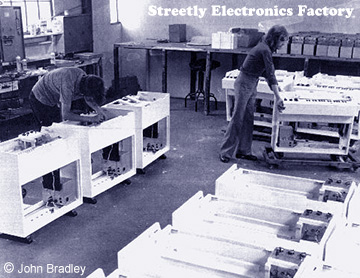
Many other bands throughout Europe and America, particularly those who played in the new "progressive rock" format (King Crimson, Genesis, Alice Cooper, Yes & etc.) were featuring the Mellotron prominently in their recordings and on-stage during the late 1960s and early 70s and most of the major recording studios would be equipped with one.
Despite the success of the Mellotron, it was still mechanically complex (the early Mk II model was never intended for touring) and the simplified M400 model was introduced in 1971 - specifically designed for bands on the road.
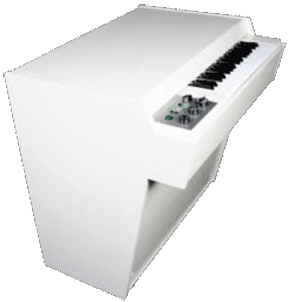
However, by the mid 1970s new types of electronic keyboards or synthesizers exploiting the latest transistors and micro-chip technology were becoming available. Digital sampling of sounds now became possible thus opening up a whole new realm of possibilities for musicians. Mellotron sales declined and Streetly Electronics went out of business in 1986.
These days, the distinctive sound of the Mellotron is kept alive by a dedicated and international group of enthusiasts who maintain surviving Mellotrons with the same energy as those who restore classic cars. In addition, a host of bands discovered the machine for the first time including Radiohead, Oasis, Gomez, The Charlatans, Paul Weller and many more.
Calgary musicologist David Kean revived the Mellotron name in 1991 and started building new machines in addition to supplying tapes and frames worldwide. He has done much to preserve the sounds of the Mellotron and maintains a website at www.mellotron.com.
Streetly Electronics, the foremost source of knowledge concerning these unique instruments, was revived by John Bradley (son of Les Bradley) and Martin Smith who continue to operate the business locally for repair and sales of Mellotrons, tapes and spares worldwide. Their clients include Paul McCartney, Paul Weller, and Jimmy Page. The Streetly Electronics website can be accessed at www.mellotronics.com and it includes samples of Mellotron sounds at their gloriously irreverent Tape Library.
Thanks to David Kean, John Bradley and Martin Smith for assistance in preparing this feature.
Copyright © John R Woodhouse 2004